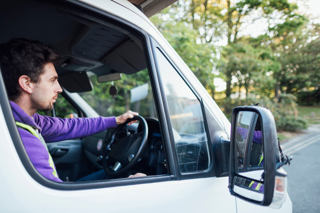Fleet decision-makers face a number of demanding challenges next year. Here, Andrew Ryan looks at some of the actions they can take to improve their operations
![]()
Fleet managers should look beyond company vehicles and rental in the search for more efficiencies and better service, says Adrian Bewley, assistant vice-president of business mobility UK and Ireland at Enterprise Rent-a-Car.
“Many (fleet managers) are already considering how company cars and rental form part of a much wider and interconnected mobility and business travel ecosystem, which includes access to local transport options via mobility as a service (MaaS) apps,” he says.
“Widening the scope of the internal conversation will help ensure the best solution.
“By engaging with the wider business holistically, a company will be able to re-examine how it moves goods and people from place to place.”
Shaun Sadlier, head of consultancy at Arval, says a growing number of its customers are looking for flexible vehicle options.
“More and more, businesses need to be able to access vehicles for short-, medium- and long-term periods to meet their business needs,” he says.
“This can range across hours, days, weeks, months and years through products like car sharing, short- and mid-term rental.”

The first clean air zone (CAZ) – London’s Ultra Low Emission Zone (ULEZ) – comes into effect on April 8 and many more are due to follow.
These may not impact hugely on company car fleets as the vast majority of vehicles are likely to be Euro 6-compliant and therefore be charge-free, says John Pryor, chairman of ACFO.
“However, CAZ entry charges are more likely to impact on van fleets so it is vital fleet operators keep abreast of developments, where charges are due to be introduced, and adapt accordingly,” he says. (Details at fleetnews.co.uk/CAZ).
Claire Evans, head of fleet consultancy at Zenith, says fleet decision-makers should now introduce wording into their company car schemes to pass on responsibility for costs of non-compliant grey fleet and cash takers travelling into CAZs in their own cars.

The United Kingdom’s future position in relation to the European Union remains unclear, but fleets should be aware of – and prepared for – how leaving could affect them.
“It might be said in relation to Brexit that ‘who knows?’, but the Department for Transport has published a series of technical notices that set out information to allow businesses and citizens to understand what they would need to do in a ‘no deal’ scenario, so they can make informed plans and preparations,” says John Pryor, chairman of ACFO.
“These technical notices include issues around driving in the European Union, including in relation to vehicle hire and insurance.
"It is vital operators undertake preparatory work, including holding discussions with suppliers, so they are ready for whatever scenario emerges at the conclusion of UK-EU discussions.”

Many organisations struggle to get to grips with their grey fleet – cars which are owned by employees and used for business journeys.
Steve Pinchen, sales director at Licence Bureau, says: “Take time out to survey who in the company is using their own car for company business by the fleet team and HR teaming up to work together.
“Once fleets have a good idea of how many grey fleet drivers they have, they can then work with senior management and their drivers to ensure they are compliant.
“Service history, MOTs and insurance are a great place to start, and this information needs reviewing on a regular basis, particularly when drivers change their vehicle.
“By collecting data and undertaking regular reviews of a company’s grey fleet risk you are automatically carrying out your duty of care commitment to your employees and in the event of a problem will show you have a process in place.”
Clive Forsythe, UK sales director at Europcar Mobility Group, adds: “Grey fleet can be the bane of fleet managers’ lives, but there is always the advantage of removing a cost from the balance sheet.
"A way to get the best of both worlds is to create a scheme that gives staff access to new vehicles that they can personally rent over a longer-term period – from six months onwards.
“The employee has access to ‘no hassle’ car usage at a known cost – and without being penalised under the benefit-in-kind rules.”

Carrying out an internal audit of management reporting practices and procedures can help fleet decision-makers ensure they are recording the information they need.
Ashley Sowerby, managing director of Chevin Fleet Solutions, says while useful information supports both the operational needs and business decisions of the fleet, excess information is, in effect, clutter.
One way to improve data-gathering processes is for fleets using spreadsheet or paper-based reporting systems to consider investing in fleet management software, while those who already use it may need to consider if it is meeting business needs.
“Even the most basic fleet management software can provide significant benefits,” says Sowerby.
“Fleets can ‘benchmark’ by adopting pre-configured fleet management systems as they contain the key modules used to streamline and manage processes. This can help determine which information you really need.”

Fleet is a fast-moving sector, with developments in areas such as technology and legislation ensuring it is vital to keep on top of trends.
“The challenge of ensuring fleet decision-makers implement best practice on behalf of their employers will not diminish in an industry where the volume of change is unprecedented,” says Paul Hollick, chairman of ICFM.
“To truly understand the cost-effectiveness of company cars from the viewpoint of both employers and employees, ensure duty of care compliance and that the ‘right’ vehicles are selected based on wholelife costs while also ensuring fitness for purpose, education and training is business-critical.”
ICFM has seen a massive increase in interest in its training courses through 2018 – from fleet newcomers to more experienced fleet professionals – and expects demand to continue, and increase, this year.
![]()
The popularity of company cars as an employee benefit appears to be waning with many fleets reporting an increasing number of employees opting to instead take a cash allowance.
Factors include concern over increasing benefit-in-kind (BIK)tax bills, exacerbated by the current uncertainty caused by the WLTP testing regime and no BIK tax bands being available for the period after April 2021.
“Fleet decision-makers should resist the easy option,” says Paul Hollick, chairman of ICFM.
“Too often, ICFM is hearing stories that employers either have, or were considering, ditching company cars because managing them was becoming ‘too difficult’ and introducing a cash option.
“Put simply, if they think managing company cars is difficult, they should try managing grey fleet cars.
“That underlines the importance of education and training for fleet decision-makers whether they are from a procurement, HR, finance background or are the managing director’s PA.
“Managed efficiently, effectively and along best practice lines, the company car has a long-term future as a favourite employee benefit.”

New technologies and environmental concerns mean that diesel is no longer the default fuel choice for fleets, with petrol, hybrid, plug-in hybrid and fully electric vehicles also viable alternatives.
However, each fuel has its strengths and weaknesses, says Shaun Sadlier, head of consultancy at Arval.
“Our belief is that the fleet of the future will employ a mix of fuel types, so having an understanding of how each of them will work in different operational scenarios is essential,” he adds.
Fleets need to carry out thorough analysis of vehicle use data to make the right decision, says Martin Evans, managing director of Jaama.
“Company car drivers, in some cases, are choosing PHEVs due to the benefit-in-kind tax advantages available over their operational viability,” he says.
“However, underpinning the decision-making process should be wholelife costs and a vehicle’s suitability for the job, ensuring it is used in ‘electric mode’ as frequently as possible, which means regular charging.
“Therefore, data analysis is key and that should include employees’ journey patterns, mileage undertaken and fuel usage.
“Without data analysis, introducing PHEVs to company car choice lists and fleets could be an expensive mistake.”

The Government’s review into the impact of WLTP on benefit-in-kind tax is due to be completed by spring 2019, meaning that the uncertainty this issue has caused fleet managers and drivers should be over.
Historically, BIK tax bands had been announced for up to four years in advance, but now they are available up to March 30, 2021.
They have also not been amended to reflect the impact of the new WLTP testing regime, which has raised the CO2 emissions figures of cars by up to as much as 20%.
“We expect that clarity will emerge in the first quarter or so of 2019 and it is essential that decision-makers adopt a pro-active, forewarned is forearmed approach,” says John Pryor, chairman of ACFO.
“While we are all awaiting the Chancellor’s spring announcement on tax, we can expect in the coming months motor manufacturers to ‘release’ many more WLTP-compliant models.
“For many years, the tax regime has signposted low emission cars as the direction of travel and that will not change.
“Therefore, fleet operators can start to review company car choice lists in light of an increasing number of WLTP-compliant models being available while being mindful that the broad scope of the new company car tax regime can be anticipated, even if the detail cannot.”

While data from telematics systems can identify bad drivers for training or disciplinary procedures, it can also be used to highlight good driving and encourage improvement.
One way to do this is to use the data to create league tables, which harness an employee’s competitive spirit and allow peer pressure to drive the desire to improve.
This can encourage safer, more environmentally friendly and cost-effective driving techniques, as well as boost employee engagement and morale.
Companies can further incentivise drivers by offering prizes such as vouchers to the best or most improved performers.
![]()
Fleets are being encouraged to teach their drivers the ‘Dutch Reach’ to reduce the number of cyclist casualties caused by people opening their vehicle doors right in front of them.
It works like this: when someone is about to exit the car, they reach across their body for the door handle with their far or opposite hand.
This forces them to turn toward the side view mirror, out and then back over their shoulder to be sure a cyclist is not coming from behind. Only then do they slowly open the door.

Telematics technology has transformed the way many organisations manage their fleets, as the ability to monitor driver behaviour has allowed companies to cut incident rates, slash fuel costs and plan more efficient delivery routes.
However, while the data the technology produces has proved invaluable to many organisations, it doesn’t always explain why a driver may be driving the way they do.
“Cameras complete the picture,” says Steve Thomas, managing director (sales and marketing) at Ctrack.
“Telematics gives you all the information, when the vehicle is used, its speed etc., but not footage of an event. Putting cameras into a vehicle gives the last piece of the jigsaw.”
Cameras can also help attribute blame after a collision, potentially cutting insurance costs, as well as preventing fraudulent injury claims.

Organisations are increasingly looking to offer a broader mix of vehicle solutions to their wider employee base so that it is not just company car drivers they are supporting, says Shaun Sadlier, head of consultancy at Arval.
“A mix such as personal lease, salary exchange and car sharing will all form a growing part of the flexible benefits package for employees and the HR function within a business will be at the heart of this approach,” he adds.
Claire Evans, head of fleet consultancy at Zenith, says that offering cars through an all-employee scheme is likely to become an ever-increasing feature in 2019.
She says: “Fleet operators should offer a variety of options to suit their employees which could be salary sacrifice or as a personal contract hire scheme.”

Fleets should specify cars ordered in 2019 with autonomous emergency braking (AEB) to cut costs and improve safety, says Andy Price, director of Fleet Safety Management.
“AEB has been proven in real-world conditions to reduce the number of rear-end collisions, so it is a clear win for organisations to specify that all vehicles joining the fleet should have it fitted,” he says.
“It is standard on some cars, but even if it costs a little more it is worth it because the reduced collision rate is going to be of benefit to the business overall.”
A study by Euro NCAP and Australasian NCAP found that AEB leads to a 38% reduction in real-world rear-end crashes.
As well as saving on repair costs, reducing these collisions will reduce uninsured losses such as vehicle downtime and damage to cargo.
Claire Evans, head of fleet consultancy at Zenith, says: “Review manufacturers and choice lists to look at the availability of cars with advanced safety features such as automatic braking and lane departure.”

The concept of changing tyres dependent on the season has never really caught on among UK fleets, with the cost and increased downtime caused by switching generally judged to outweigh the benefit of the improved grip they offer in our often mild winters.
But there is a new generation of ‘all-season’ tyres which can provide winter-certified performance coupled with strong performance in the warmer and drier months.
Tea company Ringtons fits Michelin CrossClimate+ tyres across its fleet of 230 vans and cars.
Operations manager Stephen Killinger says: “They are costing us a few pounds more than the tyres we fitted previously, but we feel it is worth it because you can’t put a price on safety and the ability just to get around in the weather we saw last winter.”

Tyres have a critical role to play in the safety, reliability and smooth operation of a fleet, so reviewing policy could prove beneficial.
“We often see fleets developing a company car policy or a driver management policy, which typically explains what drivers should do in the event of an accident, or how they should drive safely, but tends not to include an element on how drivers should look after the tyres on their vehicle,” says David Morris, business account manager – fleet and public sector at Goodyear.
“Educating their drivers on how to carry out day-to-day maintenance, such as checking their pressures and tread levels, will help to increase driver safety, but will also impact the tyre’s performance.”
Jonathan Layton, head of fleet at Michelin, says fleets should also take a fresh look at the technology available to them, as there are plenty of apps which can support their goals of increasing safety and sustainability.
These include tyre dealer apps which can help streamline tyre bookings and appointments, while inspection apps require drivers to carry out checks against a personalised list.

The mental well-being of a driver can have a far-reaching effect on the smooth operation of a fleet.
“Make no mistake, if you are not managing fatigue, stress and driver well-being, it is having an impact on your operation,” says Paul Jackson, head of impairment research at TRL.
A tired or stressed driver is likely to take greater risks behind the wheel, increasing the likelihood of a collision.
“There is the bent metal costs, bumps and scrapes, damaged wing mirrors and increased insurance costs, while research has shown that tired and stressed drivers use up far more fuel,” adds Jackson.

Organisations should carry out a fleet policy review to enable them take a flexible approach to vehicle procurement this year.
“There are still so many unknowns,” says Simon Staton, director of client management at Venson Automotive Solutions.
“The only certainty is no supplier can provide you with the answers on future taxation, the ultimate impact of Brexit or final outcome on model line-up from manufacturers in the wake of WLTP.
“Instead they should be advising you based on current knowledge and available data. So, start 2019 with a fleet policy review.
“This shouldn’t just look at the vehicle selection but encompass all aspects of managing the fleet. Start with reviewing the issues that you had in 2018 and make sure these have been resolved or, as a minimum, an action plan is in place.
“Then consider whether there is anything that can be changed in the policy that won’t be impacted by the uncertainties in the market, such as grey fleet management, management of pool vehicles, driving for work policies and driver training.”

Fleets should strive for safety best practice and not just do enough to be legally compliant, says Andy Price, director of Fleet Safety Management.
“Some organisations do things just to tick the box to protect themselves against prosecution, but one of my favourite sayings is ‘never confuse what’s legal with what’s safe’,” he adds.
“For example, you could argue it is legal to use a hands-free phone while driving, but it clearly isn’t safe.
“Companies should be reviewing where they are and measuring themselves against what current best practice looks like.
“Not every organisation is going to be able to achieve best practice, but they should be working towards continually evolving and improving what they are doing to continuously drive down their collision and claim rate.”






















Conny - 26/04/2021 17:10
This is a very informative article and I have honestly learned a lot from it